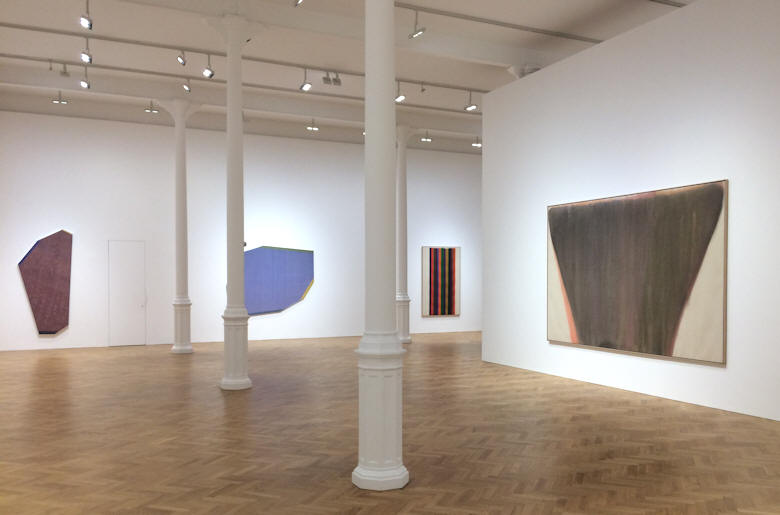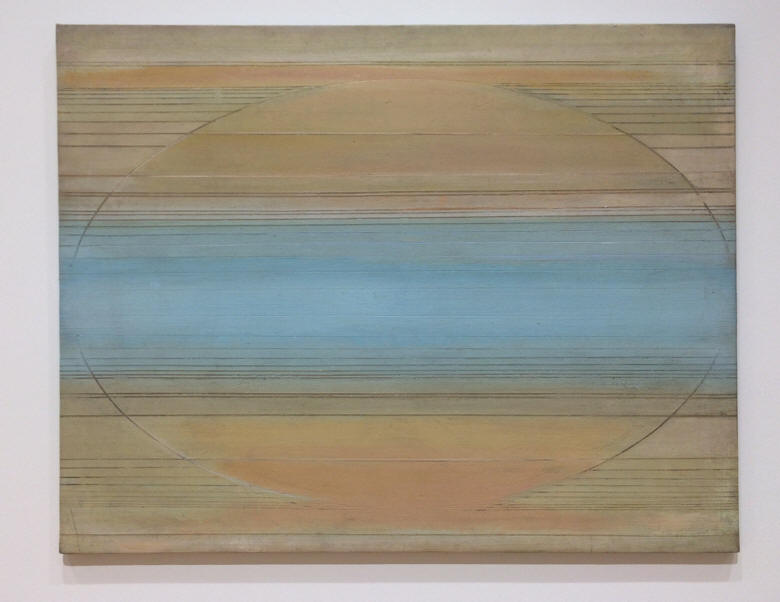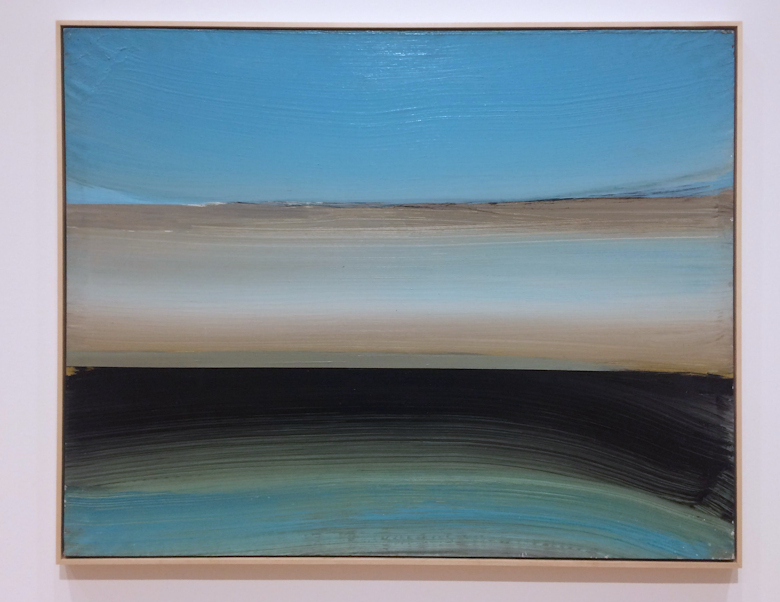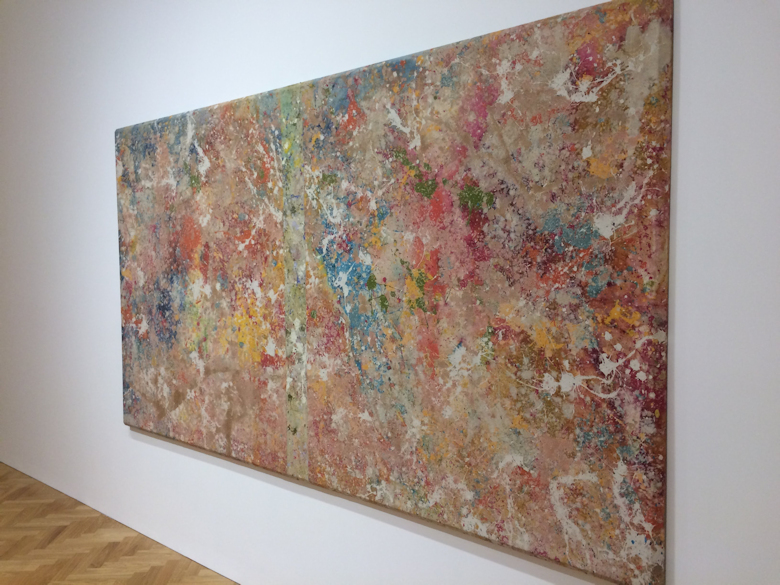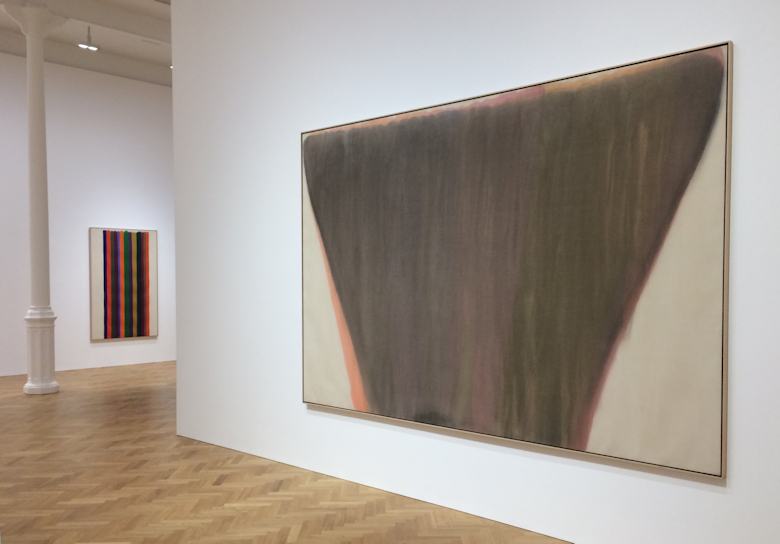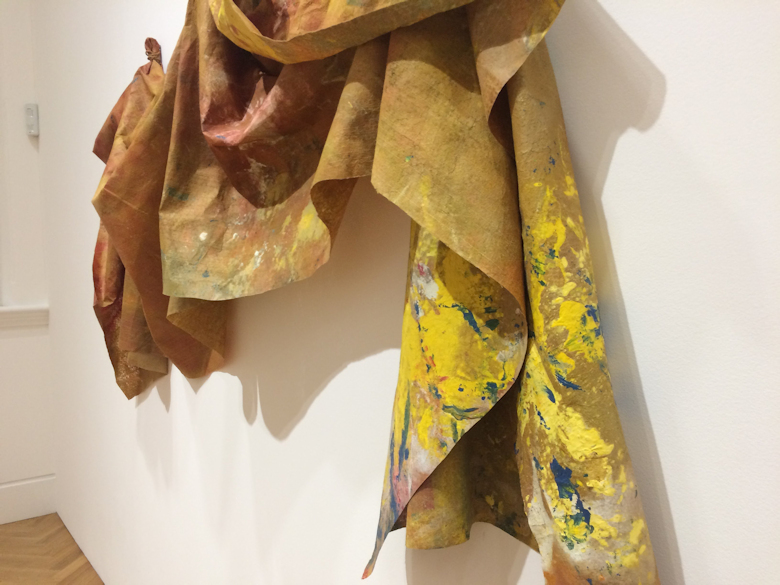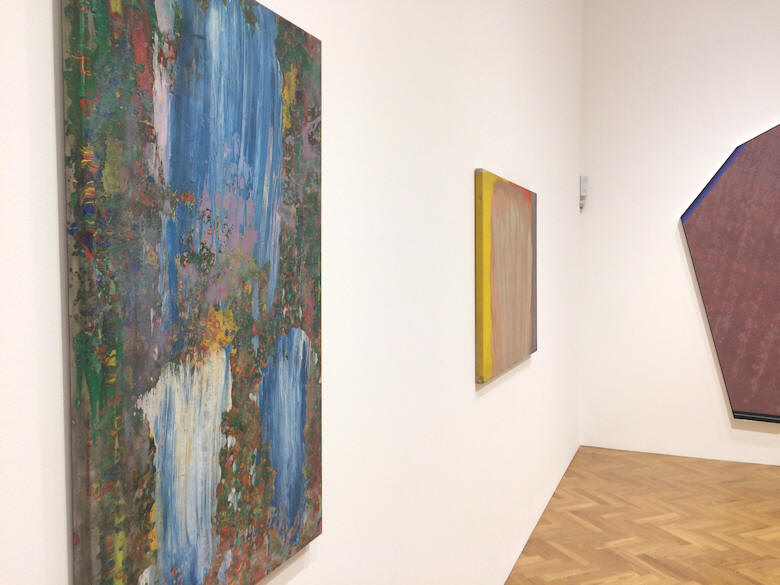|
|
| home | exhibitions | interviews | features | profiles | webprojects | archive |
|
Impulse Pace London 3/11/17-22/12/17
Ed Clark 'Yucatan Beige' 1976
Ed Clark 'Chablis Blue' 1989
Kenneth Noland 'Indo' 1977
Sam Gilliam 'Onion Skin' 1975
Morris Louis 'Plenitude' 1958
Sam Gilliam 'After Micro W#2' 1982
Frank Bowling 'Lenoraseas' 1976 (foreground)
'The ‘60s and ‘70s were a radical time in the history of abstract painting in America. Emerging from the dominance of Abstract Expressionism in the ‘50s, Frank Bowling, Ed Clark, Sam Gilliam, Morris Louis and Kenneth Noland each experimented with new techniques to push the language of abstract painting forward. While Noland eliminated highly personal, gestural expression in favour of hard-edged abstraction, others poured, dripped, and pushed paint across the surface of the canvases. Many had the desire to break down the distinction between painting and sculpture, to create paintings that were physical objects as well as abstractions. Ed Clark and Kenneth Noland, for example, shaped their canvases, using their unconventional forms as vehicles for colour, while Sam Gilliam beveled the edges of his canvases and eventually took them off the stretcher all together. Pre-eminent art critic Clement Greenberg initially influenced these artist s – Bowling, who talked to Greenberg almost daily, recalls that “Clem spoke for us all.” Despite Greenberg’s importance, many of the artists later experimented beyond the ideals and conventions disseminated in his writings. As part of the same cultural network in New York and Washington D.C., yet working individually, the artists on view exchanged ideas and often exhibited together. In 1971, Noland, Clark and Gilliam showed together in the seminal 'de luxe show', which explored the potency of colour in post-painterly abstraction and was one of the first racially-integrated exhibitions in America'.
|
|
|

